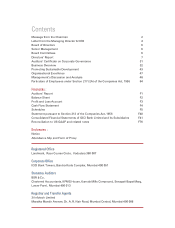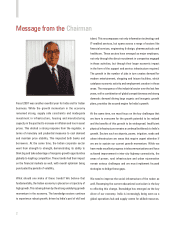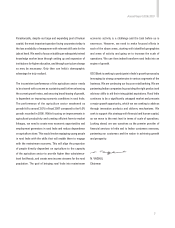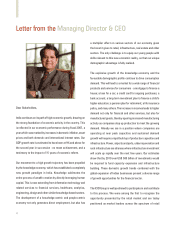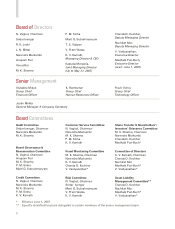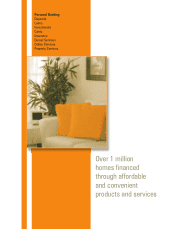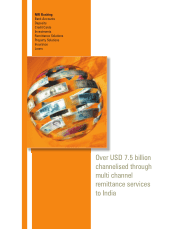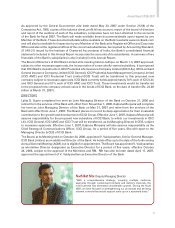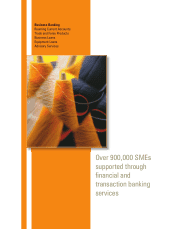ICICI Bank 2007 Annual Report Download - page 4
Download and view the complete annual report
Please find page 4 of the 2007 ICICI Bank annual report below. You can navigate through the pages in the report by either clicking on the pages listed below, or by using the keyword search tool below to find specific information within the annual report.
2
Message from the Chairman
Fiscal 2007 was another eventful year for India and for Indian
business. While the growth momentum in the economy
remained strong, supply side constraints and inadequate
investment in infrastructure, housing and manufacturing
capacity in the past led to increase in inflation and rise in asset
prices. This elicited a strong response from the regulator, in
terms of monetary and prudential measures to cool demand
and maintain price stability. This impacted both banks and
borrowers. At the same time, the Indian corporate sector
went from strength to strength, demonstrating its ability to
think big and take advantage of inorganic growth opportunities
globally to leapfrog competition. These trends had their impact
on the financial markets as well, with overall optimism being
punctuated by periods of volatility.
What should one make of these trends? We believe that
fundamentally, the Indian economy is placed on a trajectory of
high growth. This is being driven by the strong underlying growth
momentum in the economy. The knowledge sectors continue
to experience robust growth, driven by India’s pool of skill and
talent. This encompasses not only information technology and
IT-enabled services, but spans across a range of sectors like
financial services, engineering & design, pharmaceuticals and
healthcare. These sectors have emerged as major employers,
not only through the direct recruitment in companies engaged
in these activities, but through their larger economic impact
in the form of the support and service infrastructure required.
The growth in the number of jobs in turn creates demand for
modern entertainment, shopping and leisure facilities, which
catalyses economic activity and employment creation in these
areas. The resurgence of the industrial sector over the last few
years, with a combination of global competitiveness and strong
domestic demand driving large organic and inorganic growth
plans, provides the second engine for India’s growth.
At the same time, we must focus on the key challenges that
we have to overcome for the growth potential to be realized
and the benefits of this growth to be widespread. Insufficient
physical infrastructure remains a continual bottleneck to India’s
growth. Sectors such as airports, power, irrigation, roads and
urban infrastructure are areas that require urgent attention if
we are to sustain our current growth momentum. While we
have made excellent progress in telecommunications and have
achieved improvement in inter-city highway connectivity, the
areas of power, rural infrastructure and urban rejuvenation
remain serious challenges and we must implement focused
strategies to bridge these gaps.
We need to improve the social infrastructure of the nation as
well. Revamping the current educational curriculum is the key
to effecting this change. Knowledge has emerged as the key
driver of our economy. India is increasingly being seen as a
global operations hub and supply centre for skilled resources.



